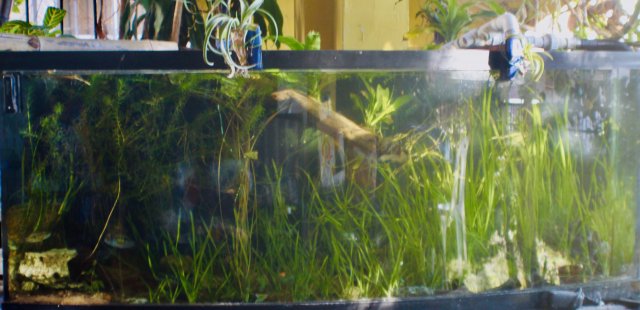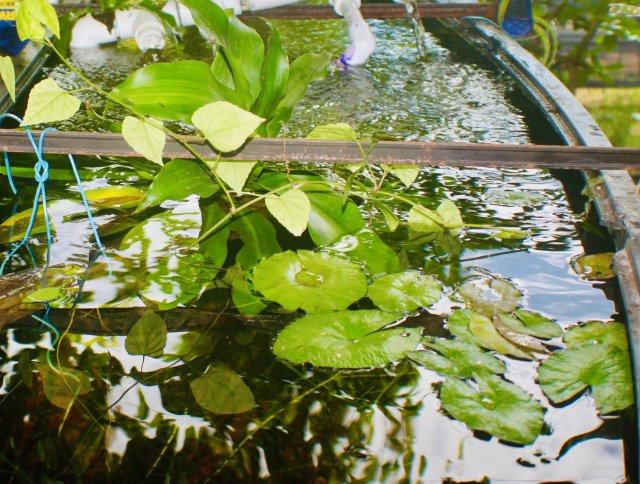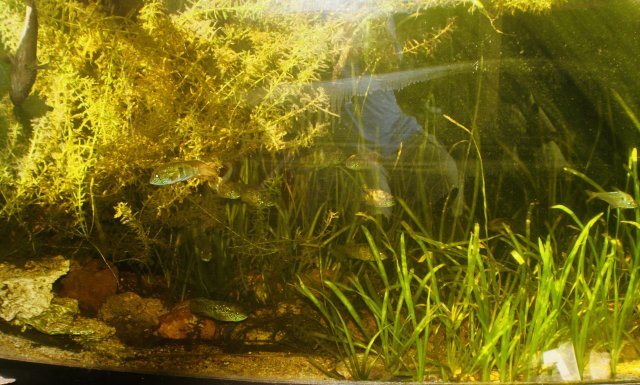Some of the fish you list, have a high tolerance for nitrate, fish that don't, are many cichlids that come from lakes and rivers where nitrates are almost non-existent.
Most swamp type fish handle them well.
Normal filtration does not take out nitrate, in fact a bi-product of filtration is nitrate.
I agree with Raka, that your tank is not heavily planted, for plants to make much of a dent, they must weigh about 3 times more than the weight the fish.
I have a heavily planted tank, and it usually reads in the 2-5ppm nitrate range, but my tap water is 0 ppm, a couple of the plants are heavy feeder, like the water lilies.
In the states the MCL (Maximum contaminant level) for nitrate is 10 ppm, and where I lived before, it was zero because the source was lake Michigan, which barely ever exceeded 1 ppm nitrate.
In my tank the plants are so thick they often totally obscure the view of the fish. (there are a dozen cichlids and a few others in the tank.

Also using terrestrial plants growing from the surface of the tank can help soak up nitrate (plants like pothos are readily available as cuttings).

Most swamp type fish handle them well.
Normal filtration does not take out nitrate, in fact a bi-product of filtration is nitrate.
I agree with Raka, that your tank is not heavily planted, for plants to make much of a dent, they must weigh about 3 times more than the weight the fish.
I have a heavily planted tank, and it usually reads in the 2-5ppm nitrate range, but my tap water is 0 ppm, a couple of the plants are heavy feeder, like the water lilies.
In the states the MCL (Maximum contaminant level) for nitrate is 10 ppm, and where I lived before, it was zero because the source was lake Michigan, which barely ever exceeded 1 ppm nitrate.
In my tank the plants are so thick they often totally obscure the view of the fish. (there are a dozen cichlids and a few others in the tank.

Also using terrestrial plants growing from the surface of the tank can help soak up nitrate (plants like pothos are readily available as cuttings).





